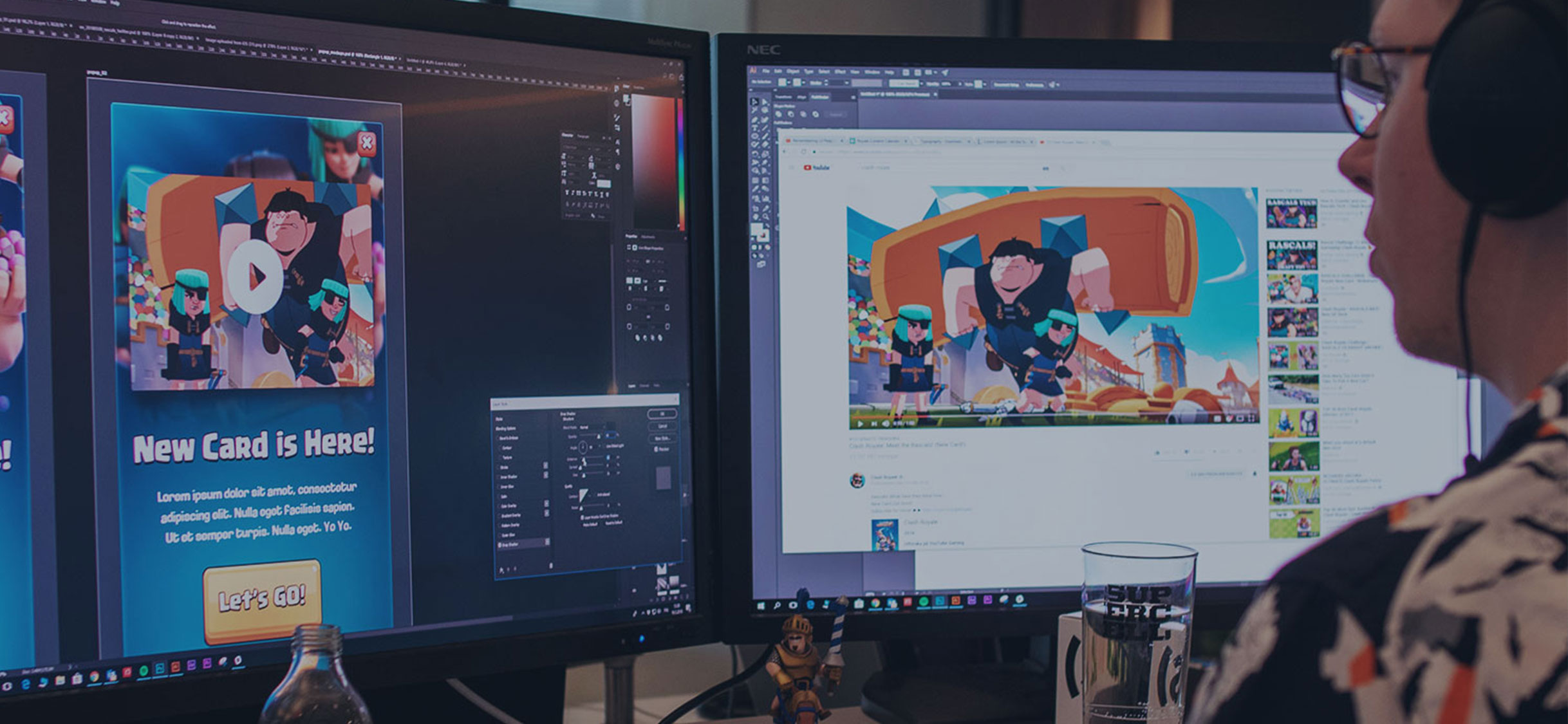
On The Job: An Artist’s Story
Visitors on our careers page may have noticed that whenever we have an opening for an artist, we’ve hardly ever had one for an Art Director. Well, sometimes we have, but we’ve used quotation marks around the title: “Art Director”. Because that is, and at the same time is not, what we are looking for. Confused? Read on.

Most of Supercellian artists have a few notches in their belt and could easily call themselves “senior artists”. Many are industry veterans, the kind of people who would have been promoted past the daily grind of crafting art in most other companies, and into positions of directorship.
That hierarchical approach does not fit with how Supercell’s artists operate, however. Here, an artist’s experience is a tremendously valuable resource, but it’s not a badge. Everyone who contributes to the artistic output of our company is essentially on an even footing and has an equally strong desire to work hands on. People have their personal strengths and specialties, but nobody stands above anyone else. For that reason, it would be very misleading of us to give the impression that we are looking for art directors in a conventional sense.
These values play in even when we turn to external production partners and freelancers to boost our ever-growing pipeline. One of our marketing artists, who has spent a lot of time with external studios on making animated videos for our games, sums it up like this:
"Whenever I, together with fellow artist colleagues from Supercell, visit a studio for the first time, we’re always cordially received by the studio heads, the CEO, the directors and the big-wheel producers. It goes without saying that we appreciate the gesture. It’s an indication of how committed these partners are to helping us, and we want to show respect for the corporate culture that they have developed for their own purposes. Yet from the start of any of these partnerships, we always need to make sure that our partners understand one thing: that communicating solely with the managers isn’t an option for us."
"What we’ve noticed is that if we don’t work directly with the artists themselves – meaning the very people who are doing the work that we’re commissioning from them – we easily end up with results rather different from what we had in mind. This is only natural, because working through layers of management means things, even important things, may get lost in translation. This costs time and money, and can be demoralizing for everyone involved."
"Talking to the artists without depending on proxies comes with two additional benefits. First of all, we get a much better understanding of how the studio actually goes about doing its work. With that information, it’s much easier for us to formulate our requests. Besides, we then know where our assistance might be needed, and where our input might only be an unproductive distraction."
"Secondly, an open connection between people is crucial for building trust. We want our partners to know who we are, and vice-versa. Sometimes, when we’re working on projects to tight deadlines, there’s a risk that everyone involved may end up doing an all-nighter to wrap up a project on time. We want those artists to know that they are doing it with us, as a temporary team of sorts on a collective effort, rather than having them feel that they are doing it just to keep their bosses happy. This shared sense of purpose has an incredible impact on the quality of the output."
The type of relationship described here is just as relevant within Supercell. Whatever you’re working on is not something you’re doing because your boss told you to do it, which is because their boss told them to deliver it. You’re doing it for and with your team, because you and your colleagues have a mutual dedication to create something you can all be genuinely proud of.
